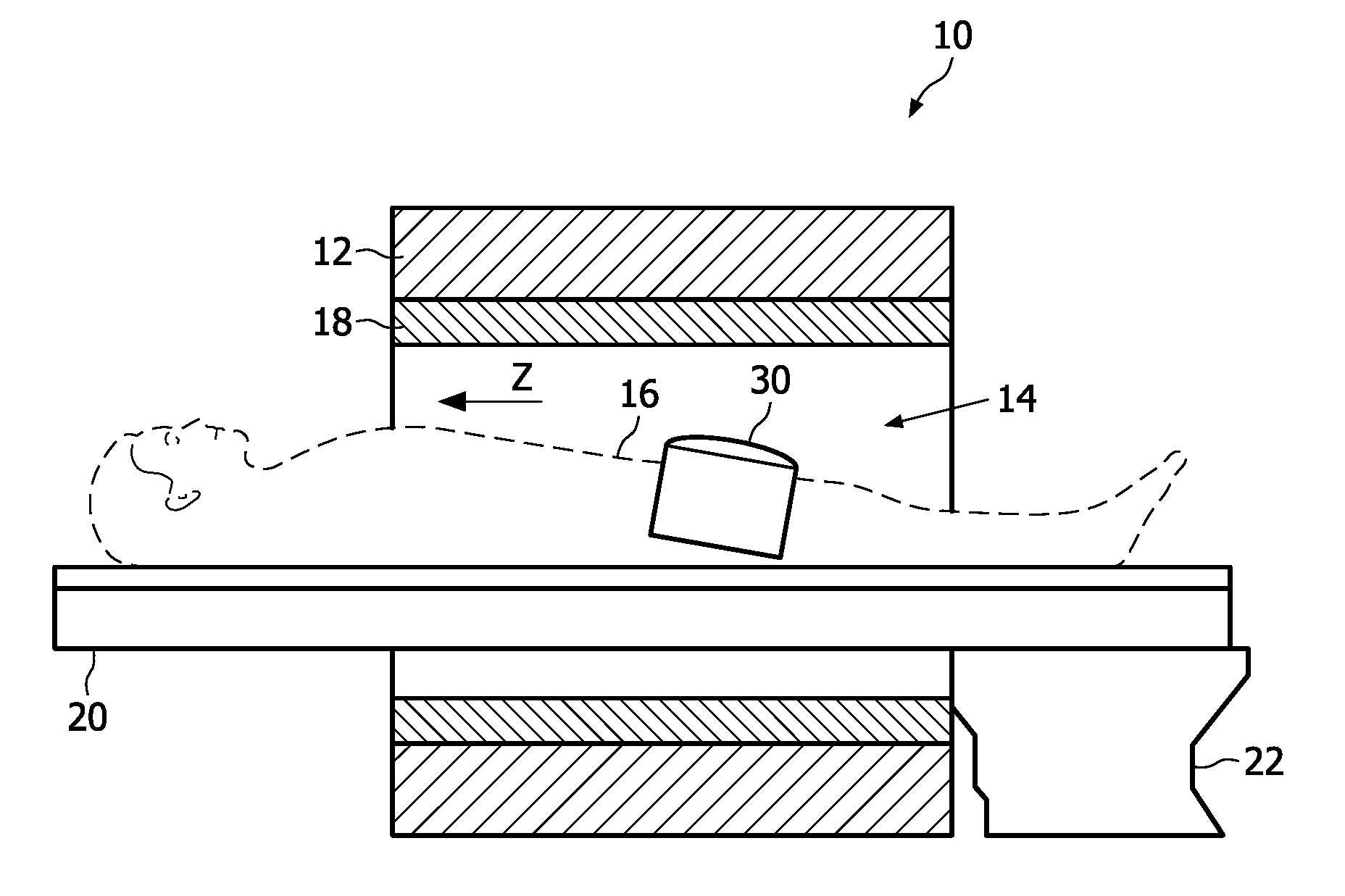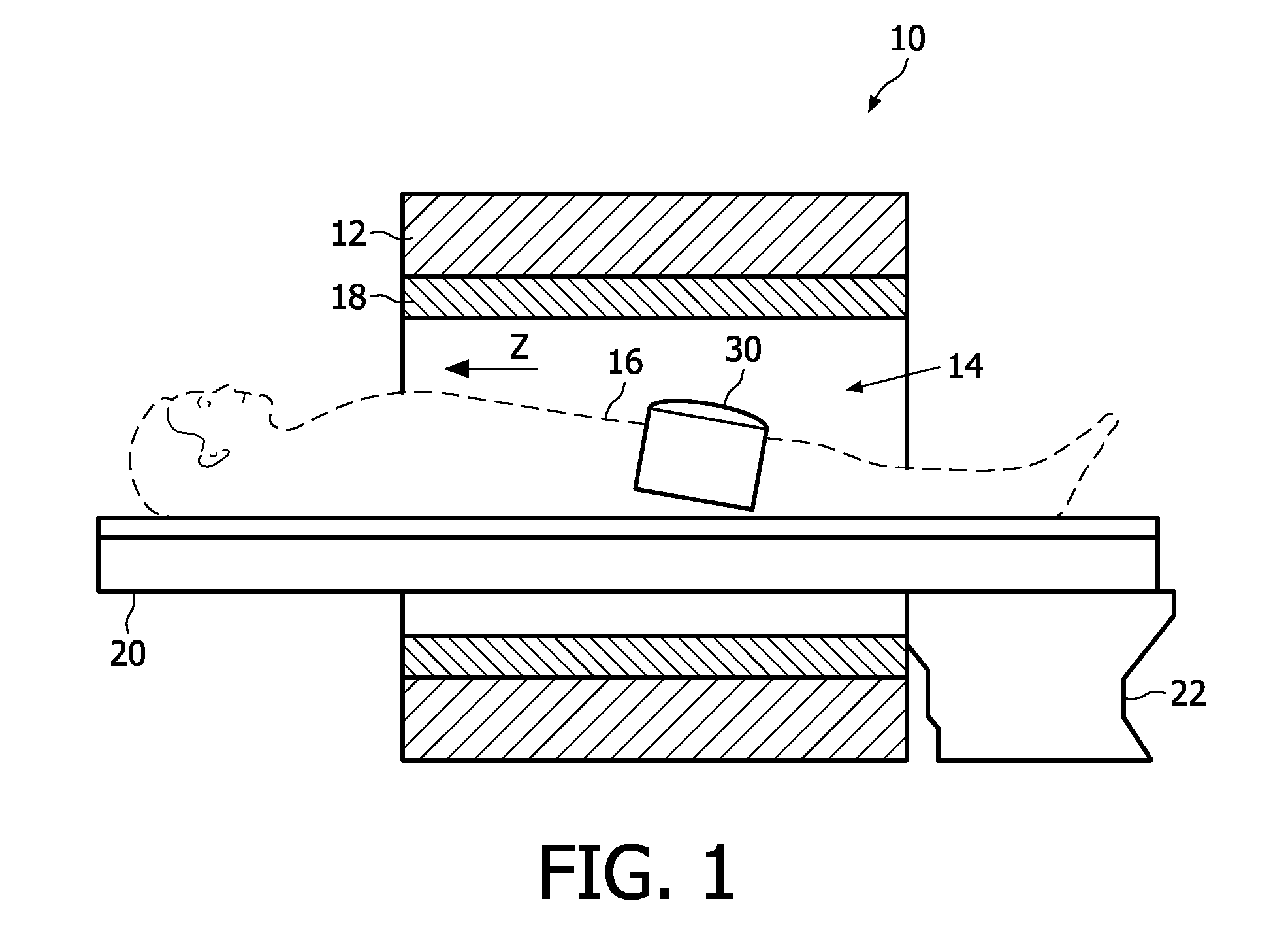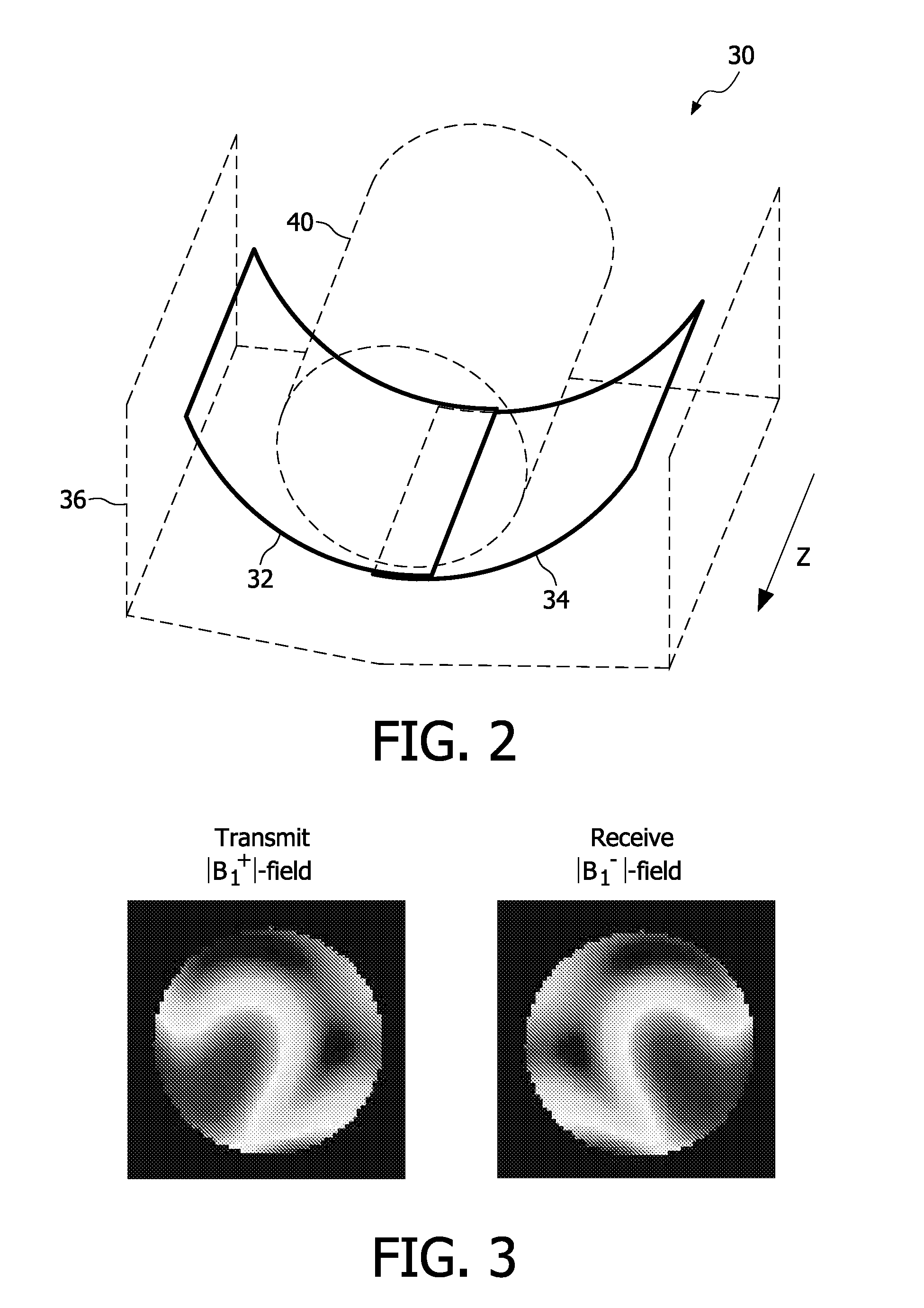Transmit/receive coil for ultra-high field MRI
a transmission coil and ultra-high field technology, applied in the field of magnetic resonance imaging and spectroscopy, can solve the problems of low magnetic field, relatively lower spatial resolution, and lower signal strength and correspondingly lower signal-to-noise ratio (snr), so as to improve the correspondence between the transmit and the receiver, improve the effect of magnetic resonance and improve performan
- Summary
- Abstract
- Description
- Claims
- Application Information
AI Technical Summary
Benefits of technology
Problems solved by technology
Method used
Image
Examples
Embodiment Construction
[0021]With reference to FIG. 1, a magnetic resonance scanner 10 includes a main magnet 12 generating a static (B0) magnetic field having a field direction oriented parallel or anti-parallel with an axial or “z” direction (indicated in FIG. 1) in an examination region 14 in which is disposed a subject 16 (shown in dashed line in FIG. 1). The illustrated magnetic resonance scanner 10 is a horizontal bore-type scanner shown in cross-section to reveal selected components; however, other types of magnetic resonance scanners can be used. The magnetic resonance scanner 10 is a high-field scanner in which the main magnet 12 produces the static main magnetic field (also known as B0 magnetic field) in the examination region 14 at a magnetic field strength greater than 3 Tesla, and in some embodiments greater than or about 5 Tesla. In some embodiments, the main magnet 12 produces a static (B0) magnetic field in the examination region 14 at a magnetic field strength of 7 Tesla. Higher magnetic ...
PUM
 Login to View More
Login to View More Abstract
Description
Claims
Application Information
 Login to View More
Login to View More - R&D
- Intellectual Property
- Life Sciences
- Materials
- Tech Scout
- Unparalleled Data Quality
- Higher Quality Content
- 60% Fewer Hallucinations
Browse by: Latest US Patents, China's latest patents, Technical Efficacy Thesaurus, Application Domain, Technology Topic, Popular Technical Reports.
© 2025 PatSnap. All rights reserved.Legal|Privacy policy|Modern Slavery Act Transparency Statement|Sitemap|About US| Contact US: help@patsnap.com



